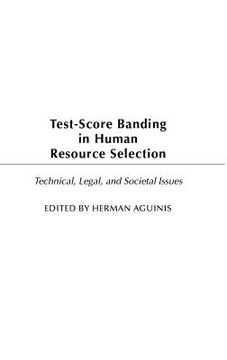Share
test-score banding in human resource selection: legal, technical, and societal issues
Herman Aguinis
(Author)
·
Praeger
· Hardcover
test-score banding in human resource selection: legal, technical, and societal issues - Aguinis, Herman
Choose the list to add your product or create one New List
✓ Product added successfully to the Wishlist.
Go to My Wishlists
Origin: U.S.A.
(Import costs included in the price)
It will be shipped from our warehouse between
Tuesday, May 28 and
Thursday, June 13.
You will receive it anywhere in United Kingdom between 1 and 3 business days after shipment.
Synopsis "test-score banding in human resource selection: legal, technical, and societal issues"
Virtually everyone is subjected to one form or another of testing. We are tested to get into schools and once we are in schools. We are often tested when we apply for a job and once we get a job. In spite of the pervasiveness and criticality of decisions made based on test scores, testing has been, and continues to be, a source of controversy. Is testing equally fair to all people? Are decisions based on tests fair to all members of society? Test-score banding is a method to interpret test scores that takes into account the fact that tests used in human resource selection are never perfectly accurate. This book analyzes the use of test-score banding from technical, legal, and societal points of view. It includes controversial arguments in favor and against the use of test-score banding, useful guidelines for practice, and innovative suggestions for research.For the past decade, organizations have relied on banding to select employees by forming groups of bands of applicants based on their scores on tests, interviews, and any other measure. Because test scores are never perfectly accurate, these bands render applicants within the same band indistinguishable. Secondary criteria, such as ethnicity and gender, then are used to break the tie, allowing organizations to increase diversity by increasing the proportion of employees who are members of underrepresented groups.

